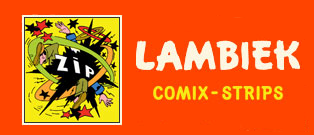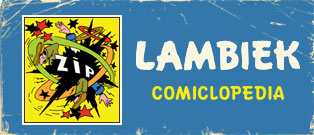Catchpenny print by Hendrik Numan spoofing eccentric hairstyles of rich ladies (J. Noman, #216).
Hendrik Numan was an 18th-century Dutch woodcut artist, active in the cities of Amsterdam and Haarlem. Considered one of the best woodcutters of his generation, he was the illustrator of several "catchpenny prints". While some of the Numan prints were educational, other showed burlesque spoofs of strange hairstyles and fashion. Two other late 18th-century prototypical comic artists who caricatured haircuts and clothing styles were Matthew & Mary Darly.
Life
Hendrik Numan was born in October 1736 in Amsterdam. His father was Laurens Numan, a ship carpenter. During his professional life, Hendrik Numan was active in Amsterdam and Haarlem. During an evening in 1788, the artist drowned after walking into the water, just outside of Amsterdam.
A 19th-century dictionary of artist biographies from the Netherlands, 'Geschiedenis der Vaderlandsche Schilderkunst' by Van Eynden and Van der Willigen, described him as follows: "H. Numan (...) was a capable woodcut engraver, who tried to follow in the footsteps of other masters in this trade, and would have certainly succeeded, if he had more encouragement. However, his work was limited to vignettes and pictures for almanacs and such." The short biography highlights Numan's funny caricatures and woodcuts based on the book 'De Honderd Ambachten' by Jan Luyken, all of which were done for catchpenny prints.
Catchpenny print depicting children's games (H. Rynders print #50).
Catchpenny prints
Since the invention of printing, several European countries had a long tradition of picture story prints, meant for the entertainment and education of the poorer parts of society. In France, the so-called Épinal prints presented idealized depictions of historical events and "true stories". The Germans called them "Bilderbogen". In the Dutch speaking parts of the Low Countries, these prints reflected the religious, ethical, social and pedagogical views of their time. Known as catchpenny prints ("centsprent"), children's prints, folk prints or "little lad's papers" ("mannekensbladen"), they were mass-produced, often on cheap paper, with rudimentary artwork and text captions with simple rhymes. Often, the texts were presented in both Dutch and French language.
The early prints presented stories in a scandalous and sensational way, including depictions of boozing, carnal desires and defecation. During the 19th century, the Dutch Society for Public Welfare ("Maatschappij tot Nut van 't Algemeen") urged printers to focus on educational tales for the youth, resulting in the prints becoming more cautionary and edifying. Still, many of the tales from previous centuries remained in print, sometimes with a revised text. Even though they were aimed at the poor, the catchpenny prints reached all layers of society. Historically, the stories give an accurate account of the everyday life and beliefs of common people, revealing long-forgotten games that children used to play, school life and the many merchants that walked the streets.
During a period of about 250 years, starting in the late 17th century and lasting roughly until the 1930s, millions of catchpenny prints were sold in the Netherlands alone. Some had print runs of 500,000 copies, an impressive amount considering the fact that the Netherlands had a population of only a couple of million people at the time. Originally using woodcuts and a hand-press, the printers gradually moved on to other techniques, including wood engraving and lithography. This allowed the artwork to become more detailed and the prints to reach a higher circulation. Since they were mass-produced and not considered art, names of the actual illustrators have been lost in history. Most prints only mention the name of the printer or retailer. Still, the origin of many prints remain unknown, as printing blocks were often resold, leading to many reprints. Only a couple of Dutch catchpenny prints have included the initials or full names of the actual woodcutter or engraver. Among the known names are Alexander Cranendoncq, Jan Christoffel Jegher, Dirk and Hermanus van Lubeek, Hendrik Numan and Jan and Gerrit Oortman.
'Voorstellingen uit de Aesopus fabelen', print with artwork based on Aesop's fables (1779).
Numan prints
Hendrik Numan was a productive woodcutter for prints. Some had one or two images, others followed the 16-panel structure of the traditional catchpenny prints. Printers that used Numan's woodcuts were the Widow Cornelis Stichter in Amsterdam, Jacobus Thompson in Rotterdam, Johannes Noman in Zalbommel and F. Holtkamp in Sneek. For a while, Numan also published prints himself, but with little success. In general, his woodcuts had much detail in the artwork, revealing an artist skilled in his craft. Some of his notable prints showed selections of crafts and professions, with some of the imagery directly based on engravings from the 17th century book 'Het Menselyk Bedryf' by Jan and Caspar Luyken. A series of prints for the printer Wendel, showing children's games, were directly based on another book by Jan Luyken, 'Des Menschen Begin, Midden en Einde'.
One of the most remarkable prints by Hendrik Numan (Noman print #216) spoofed the wigs of the wealthy, showing posh people with extremely eccentric hairstyles. For Stichter print #13, Numan used the same gimmick and showed people with big hairstyles, umbrellas and strange fashion. Another burlesque print by Numan was 'De Vernieuwde Jan de Wasscher', one of many remakes of the satirical take on the division of roles between men and women, starring the wimpy Jan de Wasscher and his demanding wife Griet. Instructed by his wife, Jan does all the household chores, including the raising of their child, and is often reprimanded for his clumsy behavior. Many artists of catchpenny prints created their version of Jan de Wasscher, often recreating the artwork from earlier prints. A 19th-century version is known with woodcuts by Alexander Cranendoncq.






